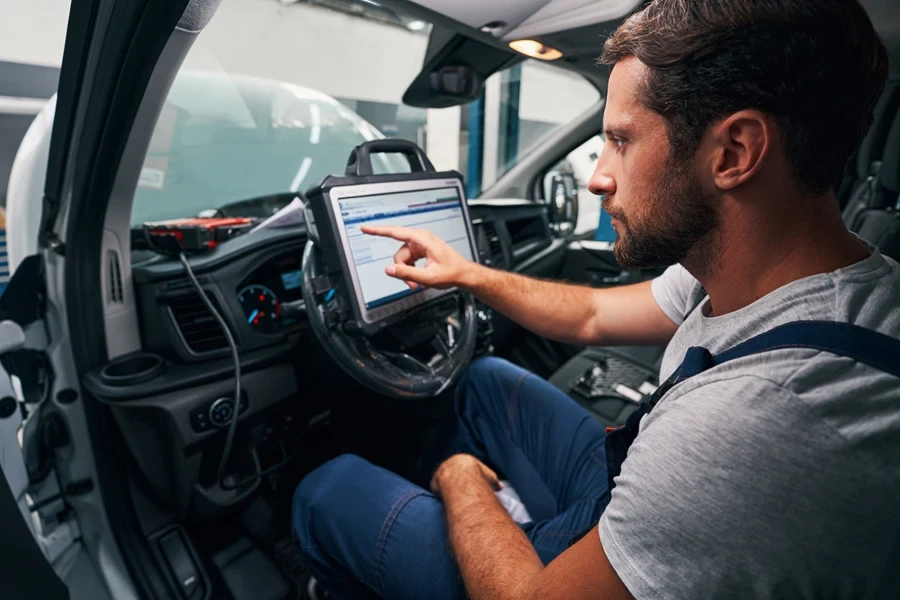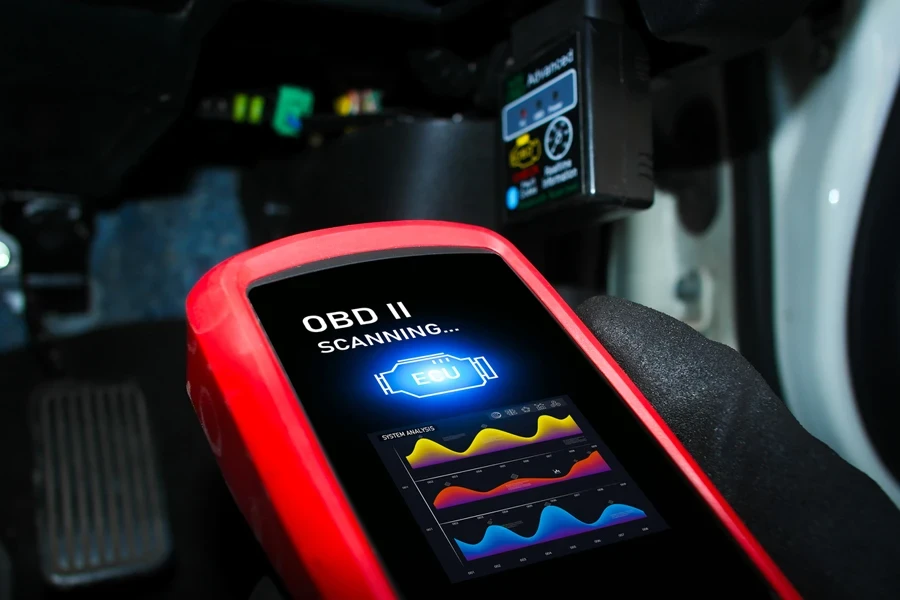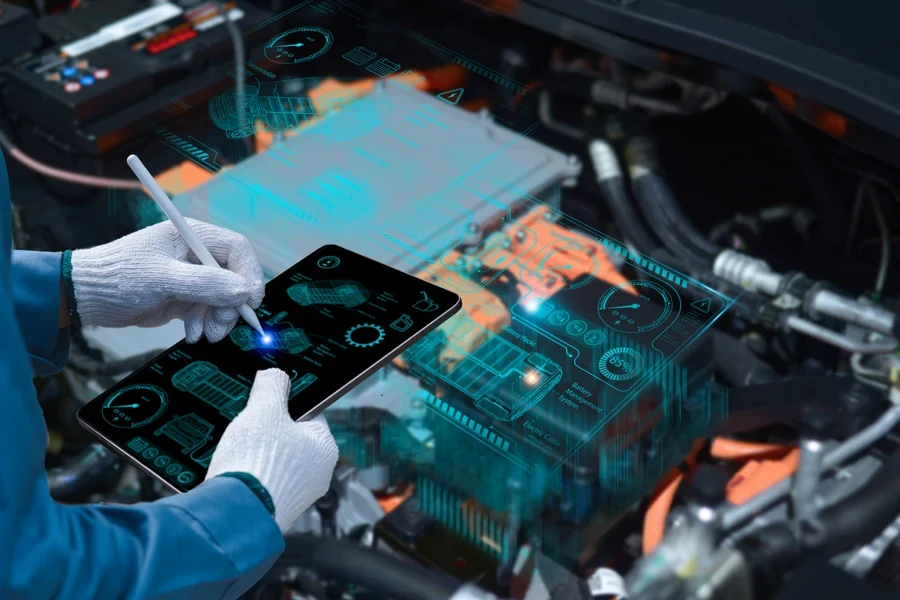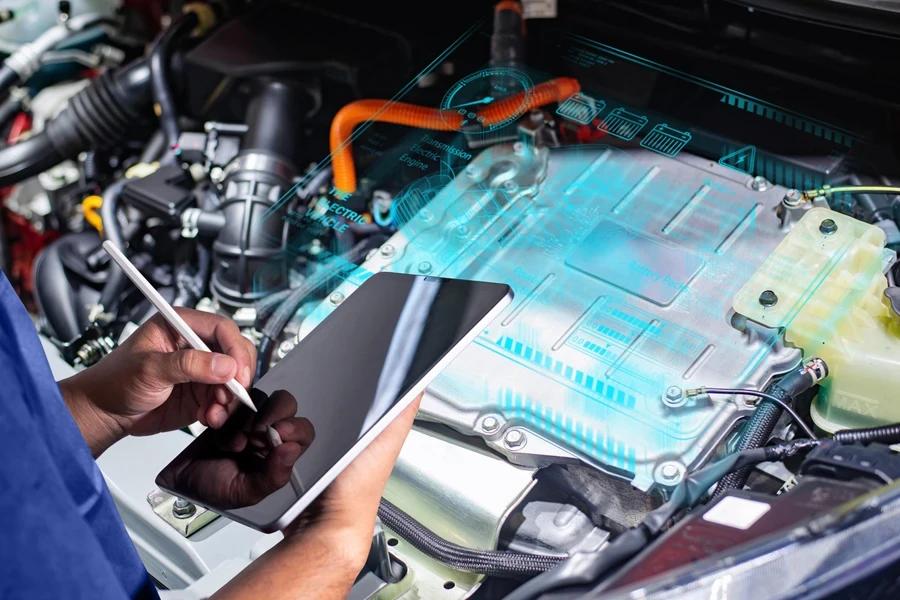Multiplexed diagnostic tools offer a modern solution for troubleshooting today’s high-tech vehicles.
Unlike traditional diagnostic tools, which communicate with only one system at a time, multiplexed diagnostic tools can simultaneously access multiple systems like the engine, gearbox, and differential. This provides technicians with a faster, more comprehensive way to identify and fix car problems.
In this article, we will examine how these tools work, why they are essential for modern vehicle diagnostics, and the different types available on the market. Continue reading to learn more.
Table of Contents
Multiplexed diagnostic tools market overview
What are multiplexed diagnostic tools?
How do multiplexed diagnostic tools work?
What advantages do multiplexed diagnostic tools have over traditional diagnostic tools?
Types of multiplexed diagnostic tools
Conclusion
Multiplexed diagnostic tools market overview
Multiplexed diagnostic tools are categorized as automotive diagnostic scan tools, whose market was valued at USD 33.1 billion in 2021, according to a report by Markets and Markets. The analysts predict that the market size will grow and reach USD 41.4 billion by 2026 at a compound annual growth rate (CAGR) of 4.5%.
The growth of the multiplexed diagnostic tools market emerges from a surge in vehicle production and sales. Increasing demand for vehicles with low emissions for commuting, as well as governments supporting vehicle inspection mandates, have compelled automakers to provide automotive diagnostic scan tools around the world.
In the report, other factors contributing to the growth of this market that have been mentioned are an increase in the number of automotive repair shops and the trend of integrating advanced features in vehicles.
What are multiplexed diagnostic tools?
Multiplexed diagnostic tools are systems or devices that can read or interpret signals from multiple components of a vehicle at the same time through a single diagnostic interface.
Technicians use these devices to resolve car issues and maintain modern vehicles, which are heavily reliant on complex electronic systems and networks.
How do multiplexed diagnostic tools work?

Multiplexing is a technique applied in communication systems to transmit multiple signals or data streams over a single communication channel. Modern cars use multiplexing in their onboard communication network, such as controller area network (CAN) and local interconnect network (LIN), to allow multiple electronic control units, each controlling a specific system (like the engine, transmission, airbags, etc.), to communicate over a shared data bus.
Diagnostic tools that are multiplexed access and interpret data from various ECUs all together when connected to the vehicle’s diagnostic port (often an OBD II port). Therefore, it enables a mechanic or technician to diagnose multiple systems in parallel without a need for separate connections for each ECU.
What advantages do multiplexed diagnostic tools have over traditional diagnostic tools?
1. Data access and coverage
These tools offer more comprehensive access to a vehicle’s entire network of systems compared to traditional diagnostic tools, which are limited to specific systems, such as engine diagnostics.
Multiplexed tools can access data from various systems, which include the engine, transmission, body control, infotainment, and even newer technologies like ADAS. They also have the ability to perform live data monitoring from multiple sensors simultaneously, making multiplexed tools a much more versatile option when troubleshooting complex issues.
2. Speed and efficiency
Multiplexed tools are faster and more efficient, while traditional diagnostic tools are laggy when used to identify problems in vehicles with multi-connected systems.
In the case where a technician wants to diagnose several systems using traditional tools, they may need to use different tools like code readers and scanners, or connect multiple sides. For multiplexed systems, one is able to collect data from several systems at the same time, which saves time.
3. Complexity and capability

Multiplexed diagnostic tools feature highly sophisticated designs to suit modern vehicles that have complex interconnected systems.
This makes them capable of handling tasks such as reprogramming ECUs, software updates, bi-directional tests, and providing an in-depth diagnosis across all vehicle systems. In addition, they can monitor and analyze data streams in real time, helping pinpoint problems with high levels of accuracy.
Traditional tools are simple and less capable of detecting issues in modern cars. In most cases, they are used to read basic fault codes or perform limited functions like resetting a check engine light.
4. Wiring and connection
Traditional tools may require individual connections to different systems if the vehicle uses a non-integrated or non-networked architecture. Therefore, more wiring will be needed to troubleshoot specific systems.
On the other hand, fewer connections are needed in multiplexed tools because all systems communicate over shared networks like CAN or LIN, reducing the need for multiple diagnostic points. The tools interface with the vehicle’s main diagnostic point, like the OBD II, and access data from all ECUs on the network.
Types of multiplexed diagnostic tools
There are different types of multiplexed diagnostic tools. Here is an overview of the main types available in the market today.
1. OBD II multiplexed scanners

These are automotive diagnostic equipment that connect to the vehicle’s onboard diagnostics port (OBD II) to communicate with the ECU.
They are the most popular type of multiplexed diagnostic tool, used mostly by both professionals and DIY mechanics. Some examples of these tools are professional-grade scanners from top brands like Autel, Launch, and Snap-on.
2. OEM-specific multiplexed diagnostic tools
Vehicle manufacturers develop specialized diagnostic tools for their own brands or models, which can be classified as OEM-specific multiplexed tools.
They are capable of providing deeper access to a vehicle’s system as well as other capabilities beyond what basic scanners can do, such as reprogramming the ECU, updating the vehicle’s software, and performing other system-specific tests.
Toyota’s Techstream, GM’s Tech 2 scanner, and Ford’s IDS (Integrated Diagnostic System) scan tool are some examples of OEM-specific multiplexed tools.
3. Wireless/Bluetooth multiplexed tools

While most diagnostic equipment requires a wired connection, wireless diagnostic tools use Bluetooth or Wi-Fi to connect to a vehicle’s onboard diagnostics port and communicate with a smartphone, tablet, or laptop via an application.
By offering wireless access to multiple vehicle systems, they ensure convenience and mobility with user-friendly apps. Top wireless multiplexed tools like BlueDriver, Fixd, and Torque Pro can be found at local and online auto parts and accessories stores.
4. PC-based multiplexed diagnostics software
This is a program installed on a computer that communicates with the vehicle’s ECU through an interface module that connects to the OBD II port. PC-based multiplexed tools are mostly used in professional repair shops.
The software allows for in-depth diagnosis, ECU programming, and advanced coding functions. It also can integrate with other tools for vehicle maintenance. Some of this software includes Ross Tech VCDs for Volkswagen/Audi vehicles and INPA for BMW and AutoEnginuity.
5. Bi-directional multiplexed diagnostic tools
These diagnostic tools not only retrieve data from a vehicle’s system but also send commands back to the ECU, which allows the user to perform active tests on other components such as fuel injectors, fans, or solenoids.
Like other tools, they can perform tasks like real-time system tests and programming of electronic control modules. Shoppers in the market for bi-directional scan tools can pick the Snap-on MODIS Ultra or the Autel MaxiSYS Series.
6. ADAS calibration tools

These are tools specifically designed to diagnose advanced driver assistance systems (ADAS) such as lane-keeping assist, adaptive cruise control, and automatic braking. They help ensure that these systems are correctly calibrated and functioning following vehicle repairs.
ADAS calibration involves precise sensor alignment, which makes these tools crucial after windshield replacements or bodywork. Examples include Autel ADAS calibration kits and Bosch ADAS diagnostic systems.
Conclusion
To summarize, multiplexed diagnostic tools solve a problem that basic diagnostic equipment has, which is the inability to handle faster, more comprehensive, and efficient diagnostics in modern vehicles.
The tools come in different types, which include wireless scan tools, software, and OEM-specific equipment. Buyers searching for multiplexed diagnostic tools in bulk can find them available at the Alibaba.com website at wholesale prices.



